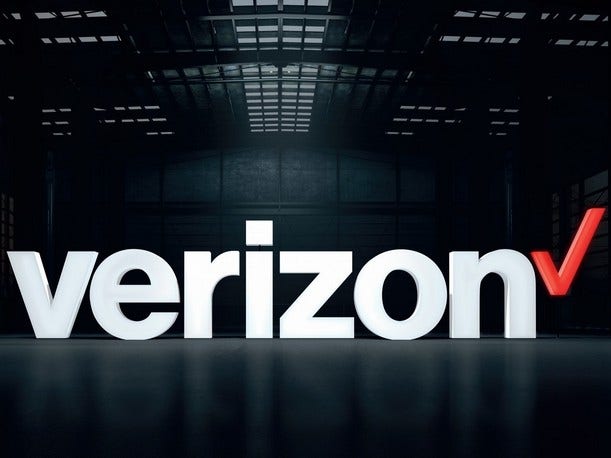Strong Verizon Wireless Revenue Carries Carrier In Q2 Following Lead-Wrapped Cable Concerns
With its new leadership team and newly formed Global Services Organization, Verizon is continuing to lean on its networking and wireless strengths. The carrier also took to its second-quarter 2023 earnings call to address a recent report that identified toxic lead cable infrastructure had been laid by Verizon and its competitors.

Verizon and its newly appointed leadership team are advancing the company’s core networking, cloud and wireless strategy as its subscriber numbers increase despite declines in the carrier’s Business segment, Verizon CEO Hans Vestberg said during the carrier’s earnings call Tuesday morning.
The telecom titan’s second-quarter 2023 results come on the heels of a July 9 report by The Wall Street Journal that found Verizon and AT&T were among several telecom providers that abandoned a sprawling network of lead-wrapped cables laid decades ago and may have contaminated water and soil and could be posing a health hazard today.
Verizon, for its part, said it was still evaluating the situation and would be taking a “methodical, fact-based approach” to the problem. Lead infrastructure, said Vestberg, makes up a “small percentage” of the carrier’s copper network, adding that it had moved away from installing these cables in the 1960s.
Tony Skiadas, Verizon’s new CFO, fielded concerns during the carrier’s second-quarter earnings call with investors.
“The likelihood of exposure to lead-sheathed cables is low. In addition, because the cable was used as a feeder and distribution cable and does not run into individual homes or apartments, it is generally in locations that minimize the potential for public contact. We are working with third-party experts to conduct our own testing on our sites that were identified by the media. There are a number of unknowns in this area, including whether there is a health risk presented by undisturbed lead-sheathed cable and if there is a risk, how that risk should be addressed,” Skiadas said.
[Related: Verizon’s Most Highly Compensated Executives In 2022]
The carrier has been taking actions to more efficiently run its business. In 2022 the company revealed the creation of the Verizon Global Services organization, which the carrier said would help free up more capital to the tune of $2 billion to $3 billion by 2025 so Verizon could further invest in its core networking and telecom services.
In addition to announcing the departure of its CFO earlier this year, the company in March named Sowmyanarayan Sampath the CEO of Verizon Consumer Group, shifting him from his position as Verizon Business CEO, which he had held for nine months. Kyle Malady, then executive vice president of global networks and technology, was appointed CEO of Verizon Business Group.
Alongside the new organization, Verizon is achieving cash savings by “rationalizing” its workforce and real estate footprint, a strategy that Vestberg said is working.
Total operating revenue for Verizon Business, which includes the company’s Global Enterprise Solutions, SMB, public sector and wholesale businesses, dipped 1.9 percent on revenue of $7.48 billion during the second quarter compared with $7.63 billion in the year-ago quarter. The company said that lower wireline revenue and lower wireless equipment revenue were more than offset by growth in wireless service revenue.
Business wireless service revenue was $3.4 billion, an increase of 5.3 percent year over year, which Verizon said was driven by continued strong net additions and the price increases that were put into effect in recent quarters.
Verizon pointed to a couple of big deals that the company won during the quarter, including a private networking deal with the U.S. Department of Veteran’s Affairs and for the Cleveland Clinic. The carrier is a “trusted partner” to enterprises and the federal government, Vestberg said.
Second-quarter 2023 marked the eighth consecutive quarter that Verizon Business reported more than 125,000 postpaid phone net additions, the company said. Verizon Business reported 308,000 wireless retail postpaid net additions in the second quarter of 2023, including 144,000 postpaid phone net additions.
The Business segment reported 133,000 fixed wireless net additions in second-quarter 2023.
Global enterprise and public sector revenue continued to trend downward, falling 2.1 percent to $3.78 billion in revenue in second-quarter 2023 compared with $3.87 billion a year ago.
Business markets revenue declined slightly by 0.7 percent during the quarter to $3.11 billion from $3.13 billion in the year-ago period. Wholesale revenue fell 1.9 percent to $590 million during the second quarter of 2023 from $629 million one year before.
For the quarter ended June 30, Verizon reported operating revenue of $32.60 billion for the second quarter, down 2.7 percent from $33.79 billion in the second quarter of 2022. The carrier’s net income fell 10.3 percent in the quarter to $4.77 billion compared with $5.32 billion during the same period last year. Verizon reported diluted earnings per share of $1.10 in the second quarter of 2023, an 11.3 percent decrease compared with $1.24 in second-quarter 2022.
The Basking Ridge, N.J.-based carrier missed Wall Street’s expectations of $33.24 billion in revenue during the second quarter of the year.
Verizon’s stock rose nearly 3 percent Tuesday morning in premarket trading to $33.98 per share.